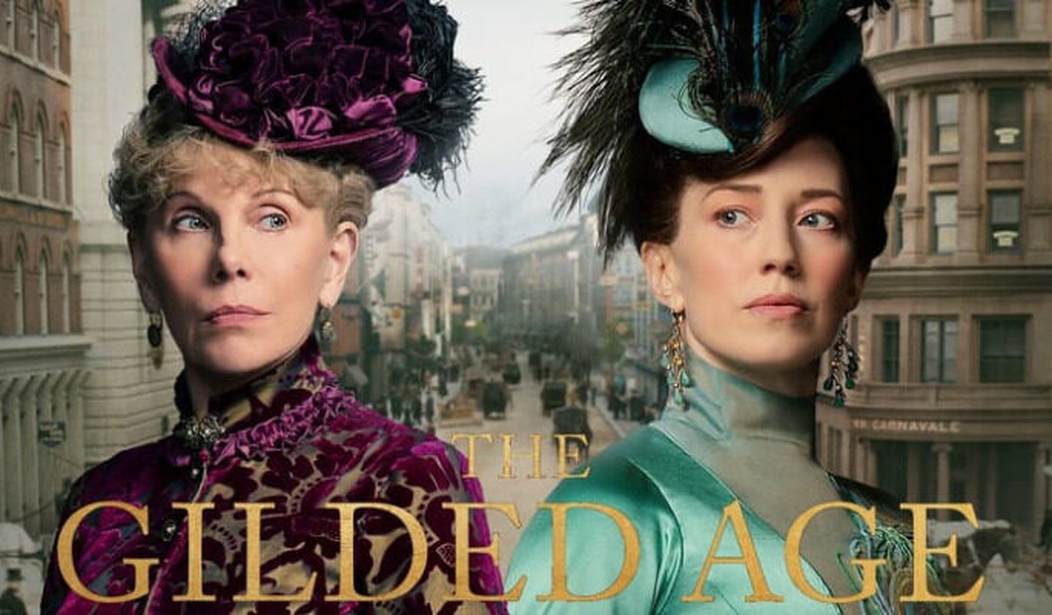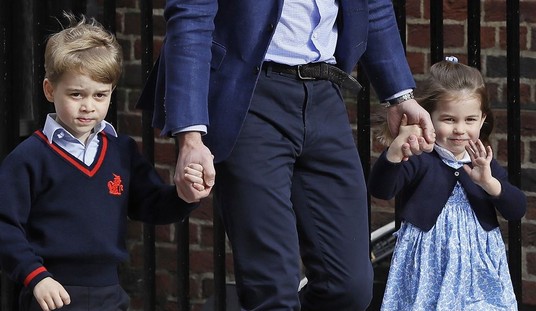Julian Fellows, famed creator of Downton Abbey, has a new period drama on HBO Max called The Gilded Age. The only reason I found it was because Cynthia Nixon, who was instrumental in destroying the legacy of Sex and the City with her politically-charged reboot And Just Like That, stars in it. I decided to watch it to see if Nixon could single-handedly ruin another show.
While Nixon’s character of Aunt Ada, a simpering old maid who obsesses over a dog named Pumpkin that keeps running away from her, is not awful, her performance is unremarkable. One gets the feeling she has a difficult time walking in the massive skirts, which would account for some of her awkward stiffness.
Nixon recently gave a review to Vogue about the show, saying it was one of the biggest budgeted series she’s ever worked on. Knowing that makes it even more difficult to understand why it looks so cheap. While the costumes are lavish and beautiful, the sets leave much to be desired. The streets are too clean and perfect, without a pothole or pile of horse poop in sight. They look like sets, unlike of the much more realistic feel of Downton Abbey, which was shot on location in an English manor. The Gilded Age also suffers from some kind of camera shenanigans I can’t put my finger on because I’m not a film expert, but it has the feel of a soap opera instead of a sweeping period drama. My director friend says it has something to do with lights, lenses, frame rate, aspect ratio, and cinematic something-or-other. Whatever it is, it’s not good and it makes the series look like a knockoff Hallmark movie. The Gilded Age also relies on green screens far too much, which lends to its imposter feel.
Related: ‘And Just Like That’ Writers Glorify ‘Exciting’ Divorce over ‘Boring’ Stability
But the main issue — the unforgivable faux pas The Gilded Age makes — has nothing to do with Nixon or the sets or the camerawork and everything to do with the show’s writers shoehorning woke and inaccurate political opinions into 1880s America. The series has black characters, because of course, it must. That is literally a requirement for any show on television now. Any new series must meet a diversity quota. One wonders if there is an actual list with boxes to tick for each pitch. 4.5 black characters? Check. 2 gay characters? Check. One agender non-binary queer questioning two-spirit character? Still waiting for that one to show up but I am reasonably certain xim/xer will eventually appear.
Personally, I was interested in the storyline of the black secretary/journalist Peggy Scott, whose family is well-off by 1800’s standards and yet who still lives in a separate world from the white residents of New York. But the “different world” the character claims to live in isn’t very apparent to the viewer, except for when Peggy steps off the sidewalk for white people to pass by occasionally or feels uncomfortable and unwelcome in Bloomingdales. Other than that, Peggy is dressed every bit as fine as the white upper-class people for whom she works, and her own family has a grand house with servants. It’s confusing. By all measures, the two girls, one white (Marian Brook, played by Meryl Streep’s daughter, Louisa Jacobson) and one black, seem equal in station and fortune and, as women, neither one can vote.
Peggy doesn’t want her father’s fortune and instead wants to make it herself as a journalist, which is why she takes a job as a secretary for a rich white lady. But she doesn’t need the job, as her father makes clear more than once. He offers to give her his successful pharmacy business. When Peggy goes to meet her mother at a restaurant, the clientele is all black and it is clearly a segregated establishment, but other than that, everyone is dressed to the nines in silks and other finery. It seems that the black people in The Gilded Age have no hardships other than not being able to associate with the white snobs who look down their noses at them. Is that supposed to be a punishment? Because the series makes it seem more like a happy choice. I wouldn’t want to hang out with Aunt Ada or Agnes either and would prefer the Scott family to the insufferable snobbery in Marian’s home.
I’m not sure what message I’m supposed to be getting from this retelling of 1880’s America. After Marian tries to visit Peggy at her family’s home and awkwardly brings some used shoes with her, thinking the family might need them, Peggy dresses her down unnecessarily with anger and resentment. Marian has never done anything but try to befriend Peggy. The scolding only makes sense to people who believe that no matter how nice white people are they have something for which to atone. They’re guilty, period.
“You don’t know anything about me, about my life, about my situation. I live in a different country from the one you know … stop thinking you’re really my friend,” Peggy shouts at Marian. But her life doesn’t look much different at all. She’s as wealthy and privileged in her world as Marian is in hers.
Related: Help! I May Need Therapy For What the ‘Sex And The City’ Reboot Is Doing to Me
During the podcast after the episodes (which HBO Max appears to love to do now with every original series), one of the writers, Salli Richardson-Whitfield, talks about this scene. “All these assumptions [Marian] had are wrong. I think it’s a perfect template for what our show is. You have all this amazing comedy and then it becomes real.” I’m not sure what “amazing comedy” she thinks this show has. I haven’t laughed once, but let’s forget that for a moment and get to the “realness.” It’s racism, of course.
“She assumes that because [Peggy is] black she must be struggling and that is her racism,” says Jacobson. “Because I think [Marian has] just never been around black people in an intimate or meaningful way.” Richardson-Whitfield continues, “Marian has no contempt. Marian is coming to things with a pure heart, but she doesn’t know. And you can’t do better until you know.”
In other words, this is a show about micro-aggressions. Marian isn’t a racist. She made an honest mistake, mostly because Peggy never told her that her family was wealthy or that she led a privileged life. Peggy allows Marian to believe she needs the job she took. It is Peggy’s deception that causes the misunderstanding, but Peggy gets to blame “racist” Marian for it. Welcome to the New Woke Order. No matter how pure your intentions or how contempt-free your heart is, if you’re white, you’re wrong and need to be educated.
But that’s not the end of the woke content. Peggy goes to work for the first black newspaper in New York, The New York Globe, with colleague and real-life historical character T. Thomas Fortune, a contemporary of Frederick Douglass. (On a costuming and set note, this scene is one of the best, with fantastic styling of the actors, a believable working press, and a bustling, exciting office that makes the viewer want to stay longer than we are allowed.) In the podcast, Denee Benton, who plays Peggy Scott, calls it exciting because “success doesn’t have to happen in a white space,” again using the language of the woke educators who come off as racist by suggesting that they believe “success” is exclusive to “whiteness.” Who believes that? Surely not people who live in America, where one of the richest women in the country is black.
Fortune was a Republican in real life who worked closely with Douglass, also a Republican. While Fortune did often rail against corruption in both parties and became disenchanted with Republicans, he was never a Democrat specifically because of the violent and racist southern wing of the party. But according to HBO Max and The Gilded Age, it somehow makes sense to have him badmouthing Republicans only.
“Don’t worry,” Fortune says to his co-worker. “We’ll get the subscriptions, but not by kowtowing to the Republican Party!” Polk responds, “A lot of colored people still believe in them, remember Lincoln was a Republican,” to which Fortune replies, “Which is why we must expose their shortcomings and demand more!” Hear, hear! I’m all for exposing Republican shortcomings; I do it daily. And I have no doubt that both parties were up to their necks in corruption in 1880, just like they are today.
The real Fortune urged black voters to be politically independent, saying they should “think less of the party” and “more of themselves.” He was known to call both parties “rotten to the core,” a sentiment many of us feel sharply today.
But the fact that the HBO version of Fortune has nothing to say about the corruption of the Democrats of the time, whose military arm became the murderous KKK, is unconscionable. The very first black representatives elected to the U.S. Congress were Republicans. And they were elected beginning in 1869, starting with Joseph Rainey. The first black Democrat congressman, Arthur Mitchell, was not elected until 1935. Before that, all black representatives were Republicans.
There is also a disturbing anti-Christian message, when Peggy goes to a Christian newspaper that wants to publish her before they know she’s black. After seeing her, they inform her she needs to hide her race to appease their readers in the South. This is extremely unlikely as Christians in the 1880’s were leading the abolitionist movement and much of the Underground Railroad. This is so well-known that even Wikipedia hasn’t tried to lie about it — yet. But the audience of 2022 is likely to believe that Christians were bigots and that black men couldn’t be Republicans in the 1880’s, because our level of education has fallen so drastically that there will be people reading this article today who had no idea the first black representatives in Congress were not Democrats. Google it, and then call your high school history teacher and ask her why she told you Republicans are big bad racists.
Related: And Just Like That, I Figured Out Who’s to Blame for the Grotesque Reboot of ‘Sex and the City’
For all the blathering woke ademics do about “healing” and “doing better,” they just keep creating things that portray white people and conservatives as irredeemable a-holes. Far from closing the divide, these types of shows just widen the gap between where we are and where we want to be, which, frankly, is back in 1986 when all of America gathered around the television to watch The Cosby Show, which did more for race relations than any show since. America doesn’t need to see a wealthy black family thriving in order to destroy our “assumptions.” That happened already decades ago. The fact that no one in Hollywood remembers it and they continue to force these lessons on us like we’ve never encountered black wealth is just stupid. This is the country of Oprah Winfrey and Michael Jordan, not Bull Connor the segregationist. (I’ll give you one guess which party he belonged to.) Those days are gone for good. So let’s celebrate that instead of constantly looking for ways to pick at the scab and tear open wounds that would have closed already if not for the insidious woke dividers’ efforts.
If you want to be entertained and dazzled by period fashion without being preached at by historically ignorant critical race theorists, skip The Gilded Age and rewatch Julian Fellows’ real triumph, Downton Abbey.










Join the conversation as a VIP Member